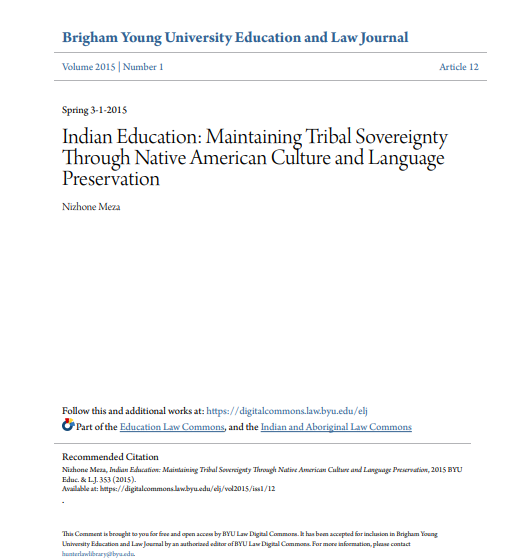Indian Education: Maintaining Tribal Sovereignty Through Native American Culture and Language Preservation by Nizhone Meza

| Title | THE ASTRONOMER AND THE WITCH- JOHANNES KEPLER’S FIGHT FOR HIS MOTHER |
| Author | Nizhone Meza |
| Overview | The article discusses the complex history and current state of Indian education in the United States, emphasizing the importance of preserving Native American culture and language as a means of maintaining tribal sovereignty. It provides a comprehensive overview of how federal Indian education policies have evolved from attempts at assimilation to more recent efforts aimed at supporting the unique educational and cultural needs of Native American students. Here’s a brief summary of the key points: Historical Context: Indian education policy initially mirrored broader federal policies aimed at assimilating Native Americans into mainstream society, often at the expense of their culture and language. The boarding school era, where Native children were removed from their families and communities, exemplifies these efforts to “kill the Indian, save the child,” eradicating native languages and cultures. Current Federal Indian Education Policy: Despite the historical push for assimilation, modern policies recognize the federal government’s trust responsibility to provide quality education tailored to the cultural needs of Native American students. Key legislation includes the Indian Education Act of 1972 and Title VII of the No Child Left Behind Act, whicRobert J. Norris’s article, Framing DNA: Social Movement Theory and the Foundations of the Innocence Movement, provides an in-depth exploration of the early development of the innocence movement. Norris critiques the dominant narrative that solely attributes the movement’s origins to DNA evidence, arguing that this perspective is overly narrow. Instead, he suggests that a more nuanced understanding of the movement’s foundations is necessary, one that incorporates social movement theory to analyze the emergence of the innocence movement. Norris begins by describing the modern innocence movement, noting that wrongful convictions have been an issue in the U.S. for at least two centuries. However, it was only in recent decades that these cases began to generate widespread concern and mobilization for reform. The article emphasizes that the movement was not simply a result of DNA testing, but also stemmed from earlier foundational developments. These include the creation of an organizational structure, the rise of movement leaders, and the recognition of wrongful conviction as a systemic issue. The article draws on archival research and interviews with key participants to argue that these elements helped re-frame DNA not just as a forensic tool, but as a means of seeking justice. Norris highlights that the movement’s success is built on this re-framing, which made DNA evidence a central part of the fight for exonerations in post-conviction cases. The movement, led by the Innocence Network and its affiliates, has gained traction in the public and policy spheres. With over 1,800 exonerations in recent decades, efforts to reform the criminal justice system have resulted in key legislative changes, such as the Innocence Protection Act of 2004 and the Wrongful Convictions Tax Relief Act of 2015. In addition to these reforms, more than 35 states have addressed factors contributing to wrongful convictions, and local law enforcement agencies have implemented practices to prevent future errors. Norris also touches on the cultural impact of the movement, noting how wrongful convictions have become a prominent theme in mainstream media, including books, films, and podcasts. This heightened public awareness has contributed to shifting attitudes about the criminal justice system, with increased recognition of its fallibility. In conclusion, Norris asserts that the innocence movement has fostered a significant shift in societal views about the criminal justice system’s ability to make mistakes. By framing DNA as a tool for justice rather than merely forensic science, the movement has transformed into a powerful force for reform, advocating for a system that acknowledges and rectifies its errors. |
| Download Link | click here to download |